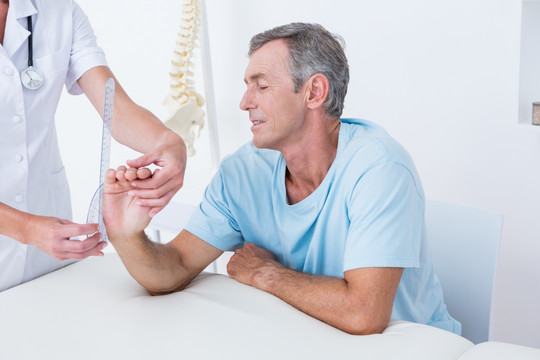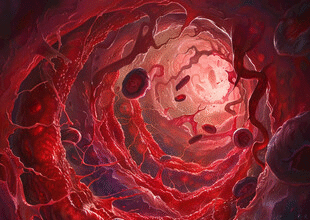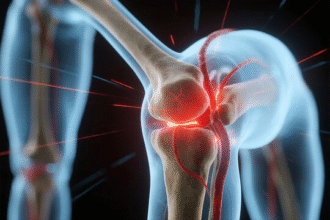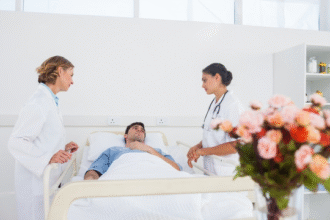Introduction
Gout is a common inflammatory arthritis characterized by monosodium urate crystal deposition in joints and soft tissues. It affects approximately 1–4% of adults globally and is associated with significant morbidity and reduced quality of life.
- Introduction
- Epidemiology and Risk Factors
- Pathophysiology
- Clinical Presentation
- 1. Asymptomatic Hyperuricemia
- 2. Acute Gouty Arthritis
- 3. Intercritical and Chronic Tophaceous Gout
- 4. Renal and Urological Manifestations
- Diagnosis
- Differential Diagnosis
- Management
- Monitoring and Follow-Up
- Patient Education
- Conclusion
Epidemiology and Risk Factors
Prevalence: Gout prevalence varies by region, reaching 3.9% in North America, 1–2% in Europe, and <1% in Asia and Africa.
Demographics: Men are 2–3 times more likely to develop gout than premenopausal women; incidence in women rises post-menopause.
Genetics: Variants in renal urate transporters (e.g., SLC2A9, ABCG2) influence hyperuricemia susceptibility.
Modifiable Factors: Obesity, hypertension, kidney disease, high-purine diet (red meat, seafood), alcohol (beer and spirits), and diuretic use.
Pathophysiology
Uric acid, the end product of purine metabolism, supersaturates blood at levels >6.8 mg/dL. Crystal nucleation occurs in synovium and cartilage, activating the NLRP3 inflammasome. This leads to robust IL-1β–mediated neutrophilic inflammation and acute joint damage.
Clinical Presentation
1. Asymptomatic Hyperuricemia
Many individuals remain symptom-free despite elevated serum urate detected on routine labs. This phase offers a window for preventive measures.
2. Acute Gouty Arthritis
Flares present with rapid-onset, excruciating monoarthritis—classically podagra—marked by erythema, swelling, and heat. Systemic signs (fever, malaise) are common when large joints are involved.
3. Intercritical and Chronic Tophaceous Gout
Intercritical periods are symptom-free intervals between flares. Chronic tophaceous gout emerges after years of suboptimal management, with tophi formation, joint stiffness, and irreversible damage.
4. Renal and Urological Manifestations
Urate nephrolithiasis occurs in 20–25% of patients; gouty nephropathy leads to progressive renal impairment, exacerbating hyperuricemia.
Diagnosis
Gold Standard: Synovial fluid aspiration demonstrating negatively birefringent, needle-shaped monosodium urate crystals.
Laboratory: Serum urate supports diagnosis but may be normal during acute flare.
Imaging: Ultrasound (double contour sign), dual-energy CT for crystal detection and tophi assessment.
Differential Diagnosis
- Septic arthritis (urgent arthrocentesis required)
- Calcium pyrophosphate deposition disease (pseudogout)
- Rheumatoid arthritis, osteoarthritis, reactive arthritis
Management
Acute Attack
- NSAIDs: Indomethacin 50–75 mg TID for 5–10 days (unless contraindicated).
- Colchicine: 1.2 mg loading, then 0.6 mg one hour later; reduce dose in renal impairment.
- Corticosteroids: Prednisone 0.5 mg/kg/day for 5–10 days or intra-articular steroid injection for single-joint involvement.
Urate-Lowering Therapy (ULT)
- Allopurinol: Initiate 100 mg daily, titrate by 100 mg every 2–4 weeks to target serum urate <6 mg/dL (<5 mg/dL in tophaceous disease).
- Febuxostat: 40–80 mg daily for allopurinol intolerance.
- Uricosurics: Probenecid 500 mg BID if underexcretion is predominant and renal function is adequate.
- Biologics: Pegloticase for refractory tophaceous gout (IV every 2 weeks).
Lifestyle and Dietary Modifications
- Weight reduction, regular exercise
- Limit purine-rich foods (red meat, shellfish), high-fructose corn syrup
- Moderate protein intake, encourage low-fat dairy and coffee
- Avoid excessive alcohol intake; maintain adequate hydration
Monitoring and Follow-Up
- Check serum urate 2–5 weeks after ULT initiation, then every 6–12 months.
- Monitor renal function, liver enzymes, complete blood count when on prolonged therapy.
- Assess for medication adherence, adverse effects, and tophi burden.
Patient Education
Inform patients about chronicity, potential for ULT-induced flares (colchicine prophylaxis for first 3–6 months), and the importance of sustained therapy and lifestyle changes.
Conclusion
Gout is a treatable crystalline arthropathy with well-defined diagnostic criteria and management strategies. Early intervention, appropriate acute treatment, optimized ULT, and lifestyle modification are essential to prevent joint damage and improve patient quality of life.







